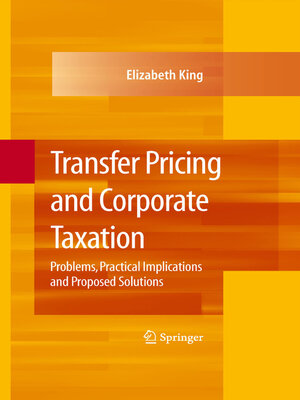Transfer Pricing and Corporate Taxation
ebook ∣ Problems, Practical Implications and Proposed Solutions
By Elizabeth King

Sign up to save your library
With an OverDrive account, you can save your favorite libraries for at-a-glance information about availability. Find out more about OverDrive accounts.
Find this title in Libby, the library reading app by OverDrive.



Search for a digital library with this title
Title found at these libraries:
| Library Name | Distance |
|---|---|
| Loading... |
National tax authorities individually determine multinational ?rms' country-speci?c tax liabilities by applying one or more sanctioned transfer pricing methodologies. These methodologies are founded on basic assumptions about market structure and ?rm behavior that are rarely empirically valid. Moreover, for the most part, the transfer pricing methodologies now in vogue were developed before the Internet became a dominant factor in the world economy, and hedge and private equity funds transformed ?nancial and commodities markets. For these reasons, multinational ?rms are unable to accurately anticipate their tax liabilities in individual countries, and remain at risk of double taxation. Uncertainties in corporate tax liability are extremely costly, both for individual corporations and from an economy-wide perspective. Firms pay exorbitant fees to have tax attorneys, accountants and economists prepare the documentation required by tax authorities to substantiate their intercompany pricing practices and defend their tax positions on audit. Corporate tax liabilities are also potentially much higher than they would be under a more transparent and predictable transfer pricing regime (due to the potential for double taxation and penalties), and investors' returns are reduced accordingly. The FASB's Interpretation No. 48, Accounting for Uncertainty in Income Taxes (released on July 13, 2006), has motivated multinational ?rms to increase their reserves substantially (in many cases at the insistence of their au- tors), reducing the total funds available for productive investment. 1 The current transfer pricing regimes are embodied in the OECD Guidelines, individual OECD member countries' interpretations thereof, the U. S.







